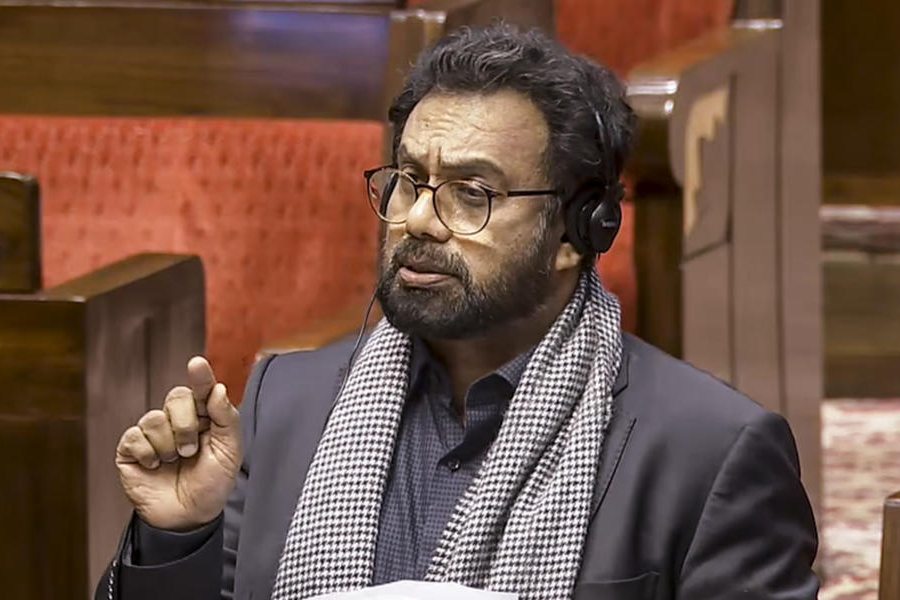The protests against the CAA-NRC in Shaheen Bagh and elsewhere in the country mark a renaissance for the Constitution. With the exception of intermittent bursts of activity, the Constitution has remained a distant document — stuff for judges and lawyers to split hairs over, politicians to strategically extol the virtues of, and school civics textbooks to regurgitate in excruciating detail. The reading of the Preamble at Shaheen Bagh, Park Circus and elsewhere has, in one stroke, brought the Constitution alive for citizens. The words of the Preamble are startling in their simplicity, powerful when invoked, and unlike most legal documents mercifully succinct. But the reading of the Preamble is not simply a literal act — it is a demonstration of the Constitution as an embodiment of virtue, a rallying cry for mass mobilization in the hope of a fairer and more just future.
However, the conflation of the Constitution with all things fair and just has already led to a veneration of the document. It has come to be seen by several as a holy book of sorts. This is problematic because the nature of any Constitution is such that it is a product of deep compromise whose meaning is always a work in progress.
The best illustration of this is provided by the chapter on fundamental rights. Widely seen as the framers’ boldest innovation, a set of entitlements for individuals against the State was the surest guarantee of creating a liberal society and a limited government. The rights to speak, assemble and unionize were guarantees given to every citizen. In this sense, the protests at Shaheen Bagh and elsewhere are carrying out the vision of the framers in enshrining these rights as fundamental in the first place.
But the liberal instincts of the framers went hand in hand with their statist impulses. As a society riven by Partition, the need for a powerful State that could provide law and order was equally felt. Consequently, each fundamental right came with considerable restrictions. In this, rather different, sense, those petitioning the Supreme Court to attempt to end the protests are also resorting to a constitutional tradition of equal vintage. That their actions are illiberal may make them disagreeable, but not necessarily unconstitutional.
Much has been written recently about the Constitution’s founding moment being a transformative one. There is certainly a kernel of truth to this statement. When the Supreme Court struck down the governmental bans on the RSS mouthpiece, Organiser, and a left-leaning daily, Cross Roads, as denials of the right to free speech in 1950, it did appear as if a new dawn for human rights had indeed emerged. But stung by the reverses, the same members of the Constituent Assembly, now functioning as Parliament, quickly enlarged the remit of restrictions through the First Amendment to the Constitution. In a fascinating new book on the subject, Tripurdaman Singh recounts in great detail how Nehru, Patel and the founding fathers of the Constitution turned on their own creation. They did this by severely restricting fundamental rights with a range of ever-widening restrictions in the interests of law and order, decency, morality and the like. The founding moment may have been transformative, but it was woefully short-lived.
Consequently, the Constitution became a site for constant struggles with statists resorting to the Constitution just as often as those championing rights. In essence, this is what the Constitution was meant to be — a pastiche of commitments that would constitute life in independent India. In its part on federal relations, it was strongly centralizing with some autonomy for states; in its directive principles, it exhorted the State to provide a better quality of life to its citizens without mandating it; in its rights chapter, it struck a delicate balance between individual rights and State powers; in its establishment of organs of State, it channelized its deep fascination for Westminster fused with robust judicial review. Each of these decisions was the product of deep thought, reflection and belief that they would provide a secure foundation for future generations to build on. Its essence lay in not having a single essence at all. There was no one idea of India that the Constitution wanted to capture. Its very idea was to capture the diversity of concepts, relations, features that independent India exhibited and which could become the foundation for a nation that everyone could proudly call their home.
This is why the literal act of reading the Preamble is extraordinarily powerful as a symbol of the people reclaiming what is rightfully theirs. The founding ideals of the Constitution have often been silent witnesses to large-scale injustice, fettering of freedoms, continuing inequalities and sacrificing fraternity for narrow political gains. To remind ourselves of the wrongness of these acts and solemnly stand against forces that divide is critically important.
However, what has made Shaheen Bagh a real bellwether of change is not that the persons gathered there are reading the Preamble but rather that there are people from diverse communities and walks of life coming together to block an arterial road in Delhi for over two months; that a bus stop has become a public library stocking revolutionary literature; that rich and poor, irrespective of religion, have come together to listen to, and sing, songs of protest. It is this actual evidence of fraternity in action and a threat to the humdrum pace of daily life caused by a road closure that are the heart and soul of the protests. It is an extraordinary demonstration of politics-from-below, a mass movement that is speaking truth to power. The Constitution itself is a sideshow.
This is exactly as it should be since the Citizenship (Amendment) Act is not simply an assault on the Constitution alone. By allowing non-Muslims from neighbouring countries a fast-track to citizenship, the government has done much more than simply indulging in unreasonable classification as per the Constitution. It has struck at the very root of the diversity of thought, the multiplicity of paths, the many ideas of India that the framers sought to build the nation on.
While the Constitution as it stands can certainly be claimed as an ally in this clash over the CAA, there is enough room in the Constitution for both sides to make this claim. That the protesters are winning this duel is heartening. But more importantly, the CAA and its protests are a contest over the spirit that gave birth to the Constitution in the first place —Will ‘Bharata Bhagya Vidhata’ be inclusive, fair and just or become resentful, exclusionary and petty? In 1950, the former handsomely prevailed. In 2020, as ‘We the people of India’ take on ‘We the other people of India’, only time will tell.
The author is Research Director, Vidhi Centre for Legal Policy. Views are personal










